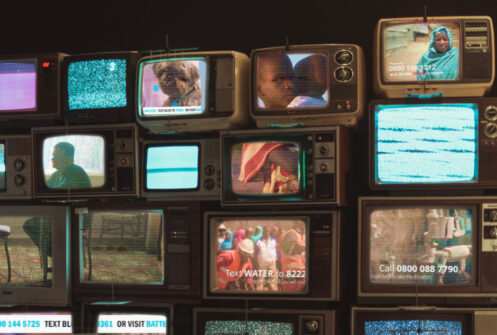

No longer just a ‘nice-to-have’, video has become a core asset for charities seeking to run awareness, engagement and fundraising campaigns, and as a result, creativity in the sector is booming!
Charities feel their content is braver than ever before, and as a result they’re seeing better cut-through with audiences. This is reflected in the campaigns voted most memorable this year, as they all push the boundaries of traditional charity video.
However, a lack of strategy seems to be making ROI difficult to measure, leaving some charities in the dark about whether video is actually effective at achieving their goals.
These are just some of the findings from our 2019 Video Content in the Third Sector report, which surveyed dozens of organisations about how they plan, measure and create their video content. The results cover insight into every stage of a charity’s process – from overarching content strategy and planning through to creative and reach.
There’s a concerning lack of video strategy across the sector driving the purpose, execution and distribution of content, and this could be contributing to the fall in perceived ROI.
While 94% of charities said they see video content playing more of a role in the next 12 months, only 28% said they had a formal strategy in place. Half of respondents said this was something they hoped to have in future, with many saying the barrier is often stakeholder buy-in. One respondent said; “It depends on organisational buy-in, particularly from non-comms specialists who may not see the benefit of spending budget on content”.
Perhaps this lack of strategy is contributing to charities finding it difficult to prove and measure ROI. Compared to 74% last year, only 50% were confident video provides a good ROI, while a staggering 41% said they didn’t know. One respondent’s explanation is reflective of many charities’ experience; “We put too much expectation (and money) into a 90 sec video, and not enough thought about wider content strategy and user journeys”.
However the fact that only 9% definitively said video does not provide good ROI implies that the impact is largely recognised, but simply difficult to quantify. Perhaps this is because the impact is longer-term, as 100% of respondents agreed that “Video has a long-term impact on the way audiences perceive charities”. We believe this is inherently linked to the role behavioural science plays in content and certainly supports the argument for a long-term strategic approach to video content.
As charities produce more and more content, it’s becoming increasingly important to ensure it’s well planned and contextualised within a user-centric strategy in order to achieve and celebrate results.
Facebook remains on top with a staggering 72% voting it the channel that offers the best results for charity videos. This is no surprise – according to the 2018 State of Social Video Report, Facebook was voted the #1 platform where consumers enjoy watching brand videos. The same report also found that video is consumers’ #1 favourite type of content to see from brands on social media, and is also the #1 way they have found out about a new brand / product before purchasing.
A big step change comes in creative formats, with results showing charities are taking better advantage of the options available to them. Encouragingly, 81% said they take the time to tailor creative to specific channels, which is obviously hugely important for optimisation and accessibility. It’s also increasingly important to consider how, why and even when audiences use each channel so that content resonates with them in the appropriate context.
In terms of the most popular creative formats, the biggest difference is Instagram Stories. Only 15.6% of respondents had tried Instagram Stories this time last year, compared to 91% this year. If you’re one of the few who haven’t, check out this article 7 reasons your charity should be using Instagram Stories by The Children’s Society’s Social Media Manager, Chris Hosker.
Another exciting thing to note is the increase in animation, which has seen a rise from 17.8% to 69% this year. Animation can be an especially effective medium for charities to communicate complex subject matter, and tends to perform well across most social media platforms and formats. New technologies also saw an increase, with 41% of charities using VR and 360 video in their communications over the past year.
Download the full report here to see all the findings from the survey and read our commentary. You can also download last year’s report here.